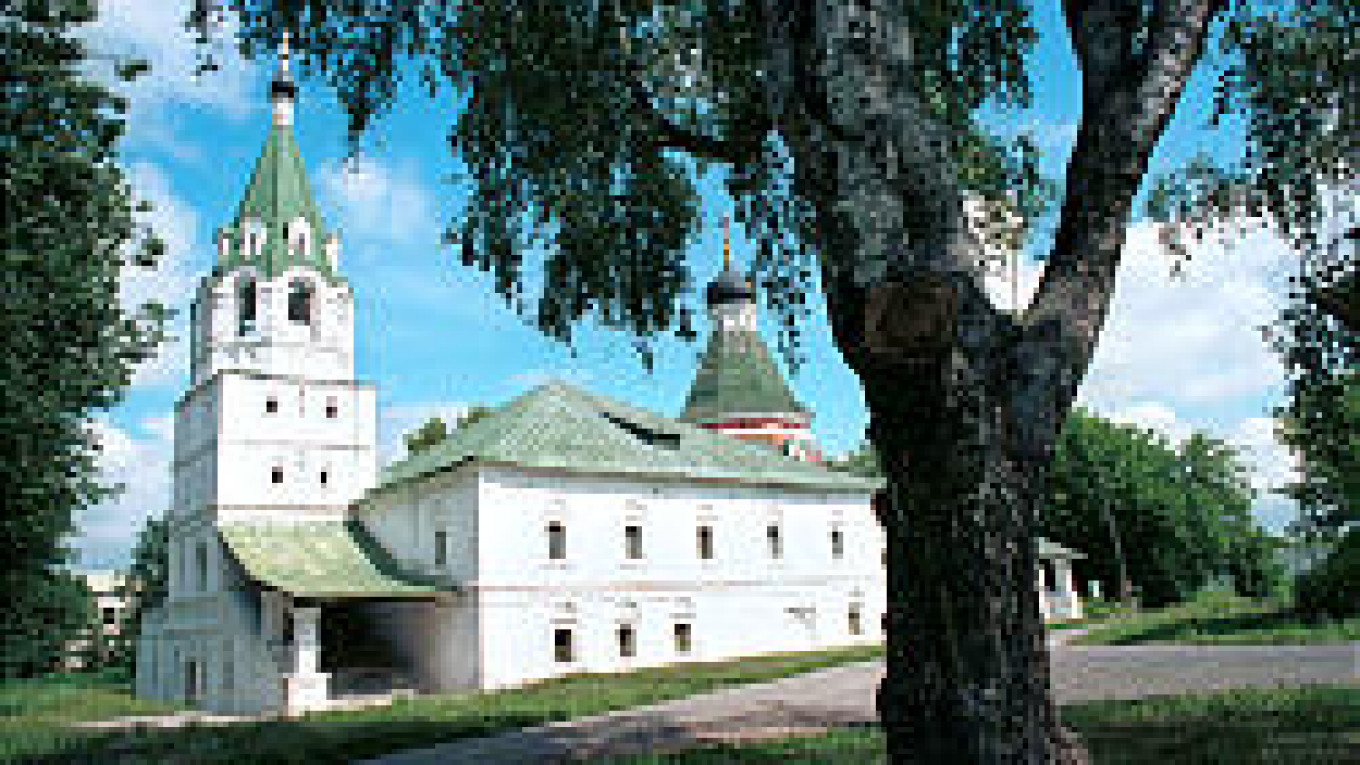Great Prince Vasily III (1479-1533), father of Ivan the Terrible, put the Alexandrovskaya Sloboda, or settlement, on the map. Charmed by the natural beauty of this area, Vasily commissioned leading Russian and Italian architects, including those responsible for the Moscow Kremlin, to build a grand summer palace here. As of Dec. 11, 1513, Alexandrovskaya Sloboda became the permanent country seat of the leaders of Muscovy.
Under Vasily's son, Ivan the Terrible (1530-84), the rural retreat changed forever. In late 1564, Ivan moved his seat of government to Alexandrovskaya Sloboda from Moscow. The chronicles relate that Ivan brought with him a 40,000-strong cavalry force, his privileged inner circle of boyars (upper nobility) and princes and 4,000 sleighs piled with his belongings.
Ivan had long been troubled by the hereditary aristocracy's resistance to his military adventures and internal reforms. After one of his top field commanders, Prince Andrei Kurbsky, defected to Poland in 1564, Ivan announced he would abdicate the throne. Muscovites, led by the clergy, rallied to persuade the tsar to remain. In 1565, he agreed, on the condition that he be allowed to form an oprichnina, a new political system on territory ruled directly by the tsar. The capital of the oprichnina was Alexandrovskaya Sloboda.
The oprichnina troops forcibly cleared the direct-rule area of its former owners, who were executed or relocated, and launched a reign of terror against those perceived as enemies of the tsar. From his retreat, Ivan the Terrible completed his plans for unifying the country, including the defeat of free Novgorod and the execution of thousands of its citizens in 1570. The oprichnina was disbanded in 1572 after its soldiers failed to defend Moscow from a Tartar attack.
Ivan the Terrible left Alexandrovskaya Sloboda for good after he murdered his only heir, Ivan, in 1581. The most common version has it that the tsar beat his son with a rod in a fit of anger, accidentally striking his temple and killing him. His son's death spelled the end of the Ryurik dynasty.
In the mid-17th century, the Assumption Nunnery was built on the basis of the former royal residence. Over its storied history, the nunnery saw many famous visitors, including Peter the Great, who took refuge here in 1689 during the Streltsy revolt.
In 1778, Alexandrovskaya Sloboda was granted the official status of a town in the Vladimir region, and its former political importance was left in the past.
For the modern-day visitor, the town of Alexandrov offers a magnificent collection of late-medieval architecture. The Assumption Nunnery and former kremlin are located on a hill overlooking the Seraya River. The 17th-century kremlin never served a defensive function.
Trinity Cathedral greets visitors at the nunnery gates. This ancient church contains original paintings from the time of Ivan the Terrible. Its walls, vaults and columns are covered with frescoes, including a rare depiction of the life of the Virgin Mary. The church's western and southern portals feature brilliant examples of Russian decorative art. The southern doors, made in 1336, were removed from Novgorod by Ivan the Terrible.
The architectural complex at Alexandrovskaya Sloboda boasts two 16th-century hipped-dome churches. The Crucifixion Church and Belfry, built in the 1570s, dominates the complex. The belfry soars more than 50 meters into the air. According to the accounts of contemporaries, Ivan the Terrible himself rang the bells for matins. Legend tells how a serf named Nikita who dreamed of flying aki ptitsa (like a bird) leaped from the belfry flapping a pair of wooden wings.
The hipped roof of the Church of the Protective Veil, built during the 16th and 17th centuries, is the only known example in Russia of a dome whose paintings convey a specific concept. Russian princes and saints are portrayed alongside Old Testament kings and prophets to illustrate the idea that the Muscovite tsars ruled by God's will .
The Assumption Church, which dates to the early 16th century, served as a family church for the royal family. The southern doors of this small church retain their original whitestone carving.
Alexandrov is more recently linked with the Russian poet Marina Tsvetayeva, whose sister Anastasia moved here after her wedding. Marina lived with her sister's family on and off between 1915 and 1917. The Tsvetayeva house at 6 Voyenny Pereulok is now a museum, open 8:30 a.m. to 5 p.m. Closed Monday and Tuesday.
You can travel to Alexandrov by elektrichka, or commuter train, from Yaroslavsky Station. The Assumption Nunnery is open daily from 9 a.m. to 5 p.m. except Friday, when it closes at 4 p.m. Closed Monday.
To learn more about Alexandrovskaya Sloboda, visit the web site alexandrov.amr-museum.ru.
A Message from The Moscow Times:
Dear readers,
We are facing unprecedented challenges. Russia's Prosecutor General's Office has designated The Moscow Times as an "undesirable" organization, criminalizing our work and putting our staff at risk of prosecution. This follows our earlier unjust labeling as a "foreign agent."
These actions are direct attempts to silence independent journalism in Russia. The authorities claim our work "discredits the decisions of the Russian leadership." We see things differently: we strive to provide accurate, unbiased reporting on Russia.
We, the journalists of The Moscow Times, refuse to be silenced. But to continue our work, we need your help.
Your support, no matter how small, makes a world of difference. If you can, please support us monthly starting from just $2. It's quick to set up, and every contribution makes a significant impact.
By supporting The Moscow Times, you're defending open, independent journalism in the face of repression. Thank you for standing with us.
Remind me later.


